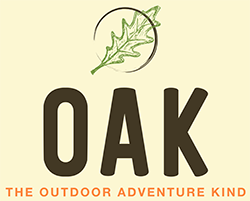Just after Labor Day, a devastating sequence of events – including a once-a-century windstorm – lead to an outbreak of wildfires across Oregon and Washington. Several continue to burn weeks later. My heart goes out to those who lost homes, friends, or family to these fires. And it breaks for the destruction of natural spaces that provide many of our outdoor adventures. Here is a list of ways to help with PNW wildfire relief & recovery efforts.
Wildfire-Impacted Community Support
As fast as wildfires could spread, ways to offer support cropped up. But the need for support won’t end with containment: Families & businesses will be impacted for months. In some areas, entire communities were destroyed. Thousands of people remain displaced. Here are just a few ways to donate funds and provide support:
United Ways of the Pacific Northwest – You can donate to the Wildfire Relief & Recovery fund, or directly to a community. This organization harnesses the caring power of local communities to further the common good, with focuses on education, income, and health. Funds will help displaced families with immediate and emergent needs. Distribution of funds will include consideration of damages, population and economic/ racial equity.
American Red Cross – Cascades Region (Oregon& SW Washington) or Northwest Region (Washington) – Donations to the Western Wildfires fund will support those impacted in Washington, Oregon, and California. The American Red Cross and their partners are providing shelter locations, meals, and supplies; they also provide next-step planning for those who need long-term arrangements. The American Red Cross provides disaster relief in communities across the country in coordination with local authorities and other partner agencies.
Go Fund Me Wildfire Relief Fund – Originally established to support victims of California wildfires, this fund’s focus widened to also include Oregon and Washington as destruction spread. Donations are issued to victims as grants by GoFundMe.org, the charitable and advocacy arm of the popular fundraising site. They’ve also established a hub of verified fundraisers tied to the wildfires, so you can trust the funds will go directly to those impacted. (Scroll down on this page to see fundraisers in specific regions.)
Restoration Efforts in Wild Areas
Areas impacted by wildfire will not be ready for restoration for some time, as it can take weeks or months to contain a fire. Even then, hotspots can continue to smolder and potentially reignite. Experts will investigate the extent of the damage and determine restoration needs after an area is considered safe. This is when land management agencies begin to coordinate with volunteer organizations.
Trailkeepers of Oregon and Washington Trails Associations are state-wide organizations that focus on engaging outdoor adventurers with the areas where they recreate. This includes the organization of trail work parties for restoration and maintenance. Donations, memberships, and volunteer hours help with restoration efforts once areas are ready for work to begin.
Many forests, parks, and regions also have dedicated organizations that support restoration and trail maintenance. Friends of the Columbia Gorge is a fantastic example of this; they are dedicated to conservation in the Columbia River Gorge. For sites of particular importance to you, search for an official organization where you can donate or volunteer.
Support Beyond Donations & Volunteerism
There are likely years of recovery ahead for both communities and wild areas that have been impacted by this year’s wildfires. Here are some ways additional ways to help:
- Touch base with friends and family connected to areas impacted by wildfires, and ask how you can support them. Something as simple as a check-in and an offer to help can make a real difference. If they have created fundraisers, ask if you can share on their behalf.
- Many local businesses were impacted by the wildfires. Consider supporting those who have been able to relocate or continue operations with purchases or recommendations of their business. If they have created fundraisers, ask if you can share on their behalf.
- As areas rebuild, visit businesses that reopen and may depend on tourists to thrive. This includes but is not limited to small and locally-owned stores, hotels, and restaurants.
- Wait to visit impacted towns until they are ready to welcome everyone back. It can be tempting to go and see first-hand what wildfires have done in an area. However, members of these communities are still at the very early stages of recovery; they need space to examine the extent of damages and plan next steps without interference.
- Wait to visit impacted natural areas until land management organizations have reopened them. Areas burned by wildfires are at risk of additional natural disasters, such as landslides and flooding. Entering into closed areas may put you at risk of injury, not to mention fines and charges of illegal trespass.
Learn More About Wildfires
If you would like to learn more about wildfires, here are some additional resources:
- Inciweb – Interactive map of active wildfires in the United States, reported from multiple agencies
- Northwest Interagency Coordination Center – Official site for coordinated efforts across Oregon and Washington to a variety of natural disasters, including wildfires
- Oregon Wildfire Response and Recovery – Official site for wildfire information in the State of Oregon; includes current conditions, preparation, and resources
- Washington Department of Natural Resources – Information on Wildfires – Official site for wildfire information from the DNR of Washington State; includes links to partner organizations and resources
- US Forest Service – After the Fire and Burned Area Emergency Response, articles regarding prioritization of post-wildfire stabilization efforts
- Adventures During Forest Fire Season – Information on how to safely explore the outdoors during forest fire season


Recent Comments